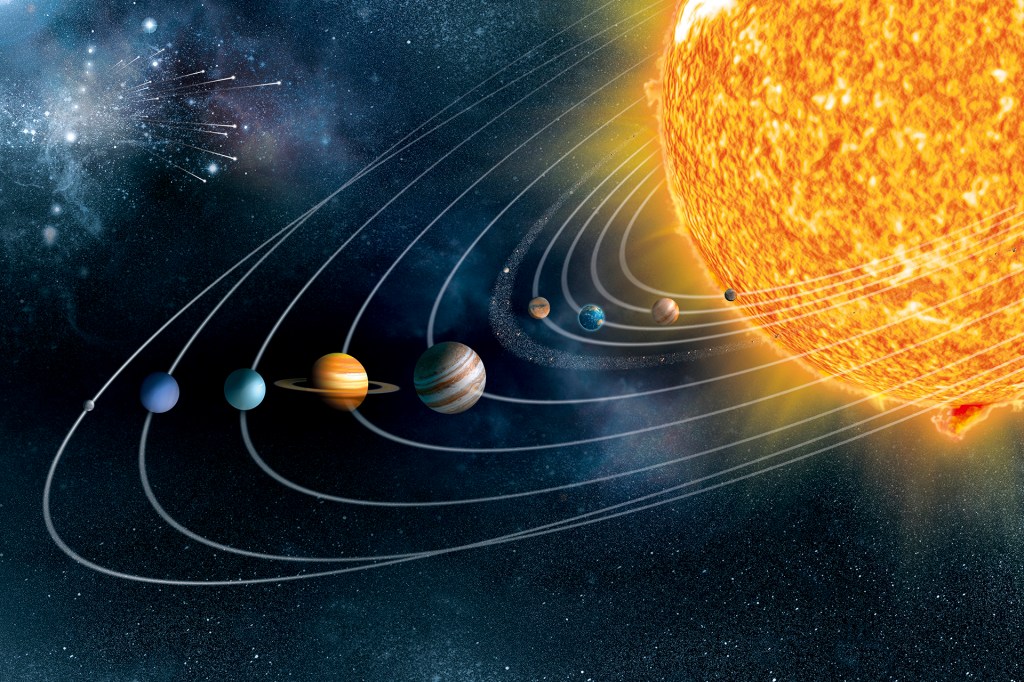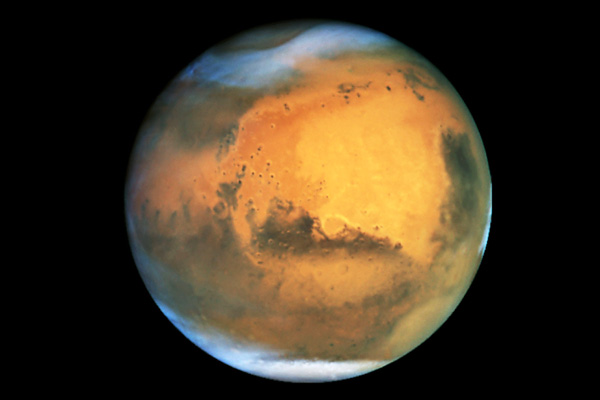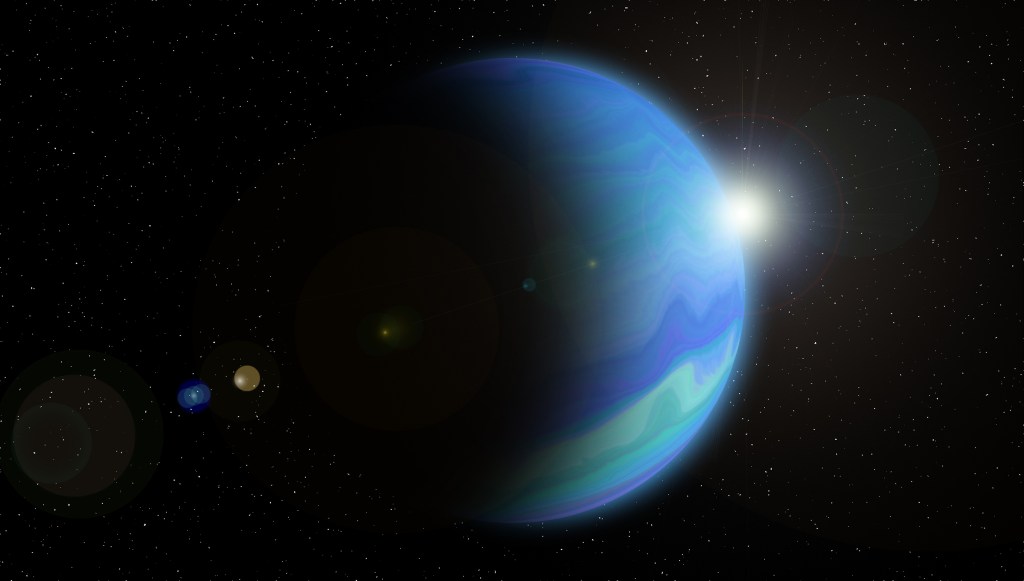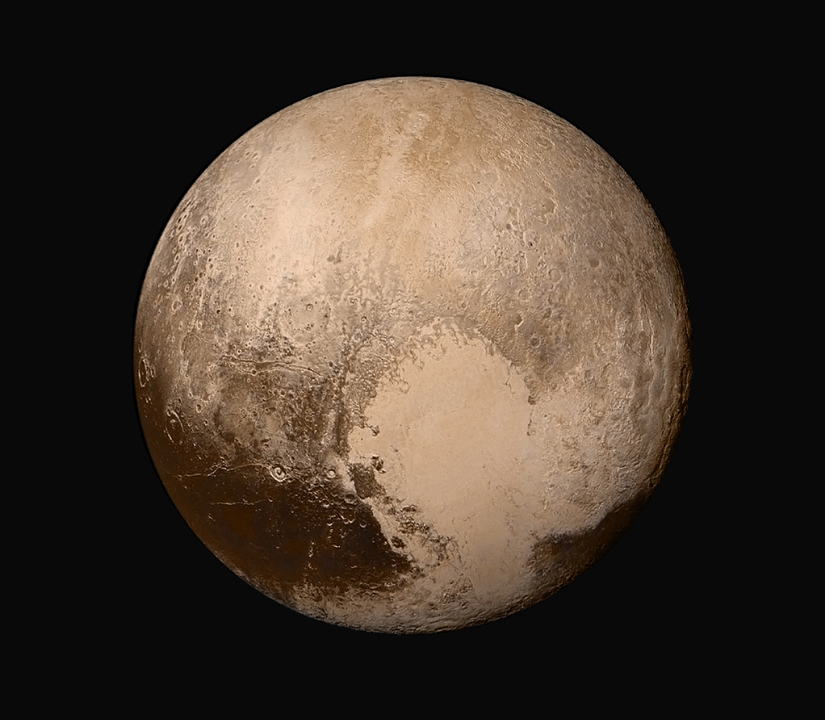What Are Planets?

Stargazers in ancient Greece noticed that during the night, a few bright objects moved among the constellations. They called these objects planetes, meaning “wanderers.”
We still call them planets. But our understanding of these celestial
celestial
 SPACE TELESCOPE SCIENCE INSTITUTE/AP
of or relating to the sky
(adjective)
The treaty said that celestials bodies like the Moon and Mars could only be used for peaceful purposes.
bodies has grown since ancient times. Now we know that planets look like they are wandering through the night sky because they are orbiting the sun.
SPACE TELESCOPE SCIENCE INSTITUTE/AP
of or relating to the sky
(adjective)
The treaty said that celestials bodies like the Moon and Mars could only be used for peaceful purposes.
bodies has grown since ancient times. Now we know that planets look like they are wandering through the night sky because they are orbiting the sun.
But what exactly is a planet? Scientists are still debating that question. Recently, the International Astronomical Union (IAU) determined that a planet must meet three conditions: It must be spherical
spherical
 DENNIS O'CLAIR/GETTY IMAGES
shaped like a round ball
(adjective)
The ball is spherical and rolls easily.
; it must orbit the sun; and its orbit must be free of other planets and objects.
DENNIS O'CLAIR/GETTY IMAGES
shaped like a round ball
(adjective)
The ball is spherical and rolls easily.
; it must orbit the sun; and its orbit must be free of other planets and objects.
Scientists have identified eight planets in our solar system
solar system
 SUMAN BHAUMIK
a star and all of the celestial objects, including planets and moons, that travel around it
(noun)
NASA is searching for Earthlike planets outside our solar system.
. But there are many other planets farther out in space. So far, experts have confirmed the existence of about 900 planets beyond our solar system. They estimate there are trillions more.
SUMAN BHAUMIK
a star and all of the celestial objects, including planets and moons, that travel around it
(noun)
NASA is searching for Earthlike planets outside our solar system.
. But there are many other planets farther out in space. So far, experts have confirmed the existence of about 900 planets beyond our solar system. They estimate there are trillions more.

Earth is the only planet in our solar system that can support life.
NASA/GETTY IMAGESHow Were Planets Formed?
Experts believe that our solar system—and the rest of the universe—formed after a massive explosion called the Big Bang. They say the explosion occurred some 13.7 billion years ago. It released huge amounts of dust and gas. Energy from the blast cooked the dust and gas together. Bits of dust formed together into clumps. As the clumps grew larger over time, gravity held them together. Meanwhile, one clump of gas began to produce its own energy. Over time, it became our sun.
The remaining dust and gas began to swirl around the new sun. Eventually, this dust and gas became the planets of our solar system. A solar system is made up of a star and the planets that orbit it.
Our solar system’s four inner planets—Mercury, Venus, Earth, and Mars—are closest to the sun. They are called terrestrial planets, and are largely composed of rock and metal. The four outer planets—Jupiter, Saturn, Uranus, and Neptune—are gas giants. They formed in a particularly cold region of the solar system, farther away from the sun.
The outer planets consist mostly of gases that swirl around in cold, windy storms. The outer planets also have ring systems. Saturn, for example, has a ring that can hold a billion Earths. When small moons and comets get too close to a gas giant, gravity rips them apart. The bits of rock and ice then begin orbiting the planet, eventually forming rings. The gas giants have so much gravity that they are able to hold onto their rings. If these outer planets were closer to the sun, gravitational pull from the sun would shred the rings to pieces.
Earth is the only planet in our solar system that is known to support life. It is just the right distance from the sun to have water, oxygen, and other ingredients necessary for life to exist. The planet is also protected by an atmosphere. It is made up of layers of gases that protect us from being harmed by the sun’s powerful rays.

This image of Pluto, made available by NASA on July 24, 2015, was created by combining several images from cameras on the New Horizons spacecraft.
NASA/GETTY IMAGESRedefining Planets
Pluto is located in the distant reaches of our solar system. It was once considered a planet—the smallest and coldest planet in our solar system. But astronomers began to question its status
status
 FATCAMERA/GETTY IMAGES
position; condition
(noun)
The doctor checked on the status of her patient.
after discovering similar objects nearby, in a region called the Kuiper Belt. If those similar objects were too small to be considered planets, then Pluto should not be considered a planet either, the scientists reasoned. In 2006, the IAU revoked
revoke
FATCAMERA/GETTY IMAGES
position; condition
(noun)
The doctor checked on the status of her patient.
after discovering similar objects nearby, in a region called the Kuiper Belt. If those similar objects were too small to be considered planets, then Pluto should not be considered a planet either, the scientists reasoned. In 2006, the IAU revoked
revoke
 HERO IMAGES/GETTY IMAGES
to put an end to; to take back
(verb)
He revoked the ban on motorcycles because of added safety features.
Pluto’s planetary status and reclassified it as a dwarf planet.
HERO IMAGES/GETTY IMAGES
to put an end to; to take back
(verb)
He revoked the ban on motorcycles because of added safety features.
Pluto’s planetary status and reclassified it as a dwarf planet.
Some scientists accepted the IAU’s new definition for planets. But others criticized the system as too narrow. In February 2017, NASA scientists proposed a new description that would add more than 100 new planets to our solar system, including Pluto and our moon.
Over the past 50 years, experts have also discovered that stars other than the sun have planets orbiting them. Planets outside our solar system are called exoplanets. Some of them lie within the “habitable zone.” That is the region around a star in which a planet could have liquid water and support life.
As scientists gain deeper understanding of the universe, the debate over how to define a planet is sure to continue.












